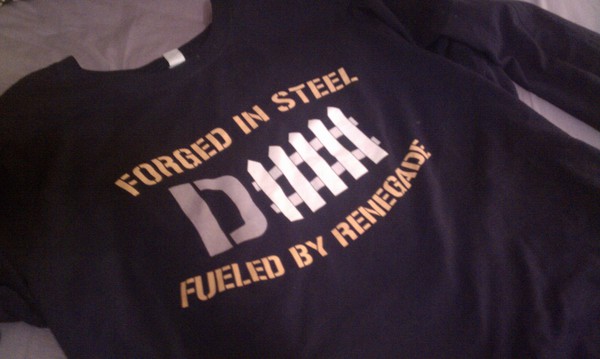In his last start of July versus the Cleveland Indians, Felix Hernandez added another milestone to his outstanding career by surpassing a record set by Tom Seaver in 1971 – pitching 7 or more innings in 14 consecutive games while allowing 2 or fewer earned runs. Even in defeat, the Mariners’ broadcast team and studio analysts were quick to praise the feat and the story spilled over on to ESPN Sportscenter and Baseball Tonight, even among the clamor of the trade deadline.
In the era of the five man rotation, which has its origins in the early 1970’s, most notably with the 1972 Los Angeles Dodgers rotation that featured Don Sutton, Claude Osteen, Bill Singer, Al Downing, and Tommy John, the 7 inning mark has slowly replaced the complete game as the measure of pitching endurance, so much so that complete games are often lead stories.
The demarcation between finishing 6 innings and completing 7 has probably been further fueled by the controversy of the “quality start.” In 1985, Philadelphia Inquirer writer John Lowe coined the term “quality start” and defined it as an outing where the starting pitcher goes 6 innings and allows fewer than 3 earned runs. Out of this definition grew the idea of “a tough loss” or “a cheap win,” depending on the outcome of said “quality start.” Critics of the quality start are quick to point out that hypothetically a pitcher could reach these benchmarks every night and finish the season with a 4.50 ERA. Bill James and other sabermetricians have concluded that, while it is theoretically possible to rack up quality starts with an ERA far above league average, it isn’t very likely.
In response to the quality start statistic, Nolan Ryan, who threw over 300 innings twice in his career in the early 70’s, called for a “high quality start,” which is defined as pitching 7 innings and allowing 3 runs or fewer. Other metrics quantify 7 innings pitched and 2 or fewer runs allowed, essentially the measuring stick of the Seaver and Hernandez streaks.
So, it comes as no surprise the previously held Tom Seaver record broken by Felix hinges on going at least seven innings. But, upon closer inspection, the 7 inning floor becomes crystal clear – there was only one game during Seaver’s 13 game streak, a bit of an anomaly on August 1, 1971 against the Chicago Cubs, that Seaver pitched as few as 7 innings. In order for record keepers to establish a record streak, 7 innings has to be the bottom limit. Otherwise there is no record.
Seaver’s streak began on July 17, 1971, in the Houston Astrodome, following the All-Star break. The 8.1 innings he pitched against the Houston Astros was one of only three games during the streak that he didn’t go the distance. He pitched 8 innings against the St. Louis Cardinals in Shea Stadium in New York on July 27, 1971, and also the 7 inning outing against the Cubs.
Every other game in the streak was a complete game, including a 10 inning outing against the San Diego Padres in San Diego on August 11, 1971.
During the streak, Seaver’s record was 8-3 with 2 no decisions and he lowered his ERA from 2.32 to 1.76. He struck out 10 or more hitters 6 times, with a high of 14 in the 10 innings against the Padres on August 11th. And, the two earned run threshold was met by his opponent on three occasions.
Felix Hernandez’s streak began on May 18th, on the road against the Minnesota Twins. During the King’s streak, he has recorded an out in the 9th inning only twice, pitching 8.2 innings against the Los Angeles Angels at Safeco on May 28th and 8.1 innings, also at Safeco, versus the Texas Rangers. He’s pitched 8 full innings, including the two outings just mentioned, 7 times during the streak, a remarkable accomplishment by today’s standards. The other 7 games, he’s completed 7 innings.
Over the course of Hernandez’s streak, his record is 7-2 with 5 no decisions. On three occasions, Felix struck out 10 or more hitters, with his high coming in 7 innings against the Tampa Bay Rays on August 8th when he fanned 15. And, that all important two run mark was equaled six times by opponents during Felix’s streak.
The eras in which these two streaks were accomplished and still are being accomplished is obviously much different. In 1971, when Seaver ran his streak to 13 games, Fergie Jenkins of the Chicago Cubs led the league in complete games with 30. This year, the leaders in complete games are Dallas Keuchel of the Houston Astros, Henderson Alvarez of the Miami Marlins, and Clayton Kershaw of the Los Angeles Dodgers with 4. In fact, the only pitcher to record double digit complete games since 1999 was James Shields of the Tampa Bay Rays, with 11 in 2011.
But, even given the differences in workloads, and that the run scoring environment of the early 70’s, especially in the NL, was a little lower than current levels, but taking into account that the strike out rate for hitters today is far higher, I might still give a slight edge to Seaver’s streak.
However, King Felix’s streak is still intact – 14 games and counting. Next up is the Atlanta Braves in Safeco.
Add The Sports Daily to your Google News Feed!
